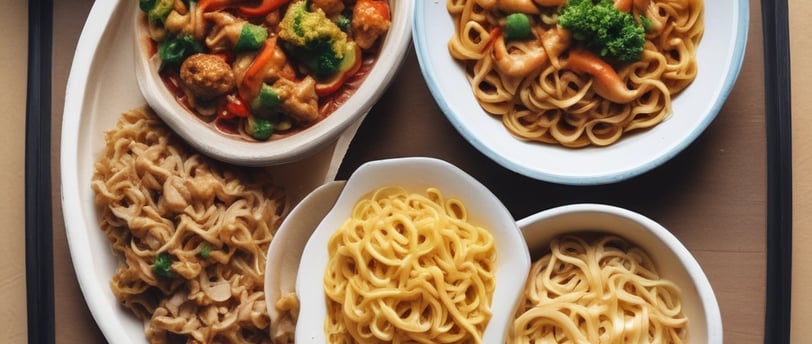A Culinary Journey Through Chinese Food
Blog post description.
3/5/20252 min read


When it comes to food, few cultures offer the sheer diversity and depth that Chinese cuisine embodies. Stretching across millennia and encompassing an array of regional flavors, Chinese food is much more than sustenance—it is a cultural expression, a craft, and a celebration of life itself.
The Art of Balance and Harmony
At the heart of Chinese cuisine lies a commitment to balance and harmony. Whether it's balancing yin and yang through cooling and warming ingredients or creating a perfect medley of flavors—sweet, sour, bitter, salty, and umami—Chinese food is a symphony for the senses. Take a dish like sweet and sour pork: the interplay of tangy vinegar, sugary notes, and tender pork embodies the ethos of achieving equilibrium on the plate.
Regional Diversity: A Feast for Every Palate
China's vast landscape gives rise to an extraordinary variety of regional cuisines, each with its own distinct character:
Cantonese Cuisine: Known for its subtle flavors, dim sum culture, and fresh ingredients, Cantonese food focuses on letting the natural essence of ingredients shine through. Dishes like steamed fish and barbecue pork (char siu) are perennial favorites.
Sichuan Cuisine: Famous for its bold and spicy flavors, Sichuan dishes embrace the "mala" sensation—a numbing yet fiery spice from Sichuan peppercorns. Classics like mapo tofu and kung pao chicken are perfect for spice lovers.
Shandong Cuisine: Hearty and rich, this cuisine emphasizes fresh seafood and wheat-based staples like steamed buns. Its braised and stewed dishes showcase culinary sophistication.
Jiangsu and Zhejiang Cuisines: Often called "the land of fish and rice," these cuisines highlight freshness and precision. Known for dishes like "Lion's Head Meatballs," they focus on delicate flavors and intricate presentations.
This regional tapestry ensures there’s a Chinese dish to suit every palate, making exploration an adventure in itself.
The Emotional and Social Connection
Food is deeply ingrained in Chinese social traditions. It is not merely consumed; it is shared, celebrated, and cherished. Whether it’s gathering around a hot pot on a chilly evening or enjoying mooncakes during the Mid-Autumn Festival, food fosters connection and creates lasting memories.
Moreover, the Chinese language reflects how integral food is to life. Everyday greetings like "Have you eaten?" (“吃了吗?”) underline its importance in cultural dialogue, emphasizing food as a symbol of care and well-being.
Beyond the Plate: The Philosophy of Chinese Food
Chinese cuisine is also steeped in philosophy. The principles of Traditional Chinese Medicine often influence the choice of ingredients, with certain foods viewed as medicinal. Ginger, for instance, is prized for its warming qualities, while lotus root is often used to cool the body.
Additionally, the concept of "waste not" is deeply respected. Every part of an ingredient is often utilized, demonstrating a thoughtful approach to cooking that minimizes waste and maximizes flavor.
A Timeless Culinary Legacy
Chinese food is far more than just a meal; it is a dialogue between the past and present, a living legacy that continues to evolve. From ancient noodle recipes to modern interpretations of Peking duck, it is a story told through taste, texture, and aroma.
As we savor the dishes that have traveled across continents, we are reminded of the enduring power of food to connect us—to history, to culture, and to one another.
